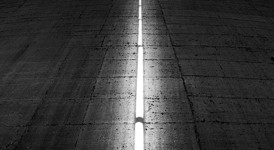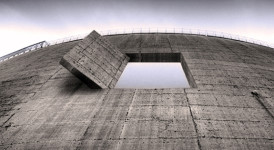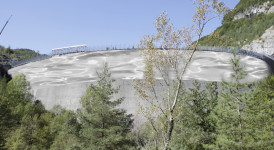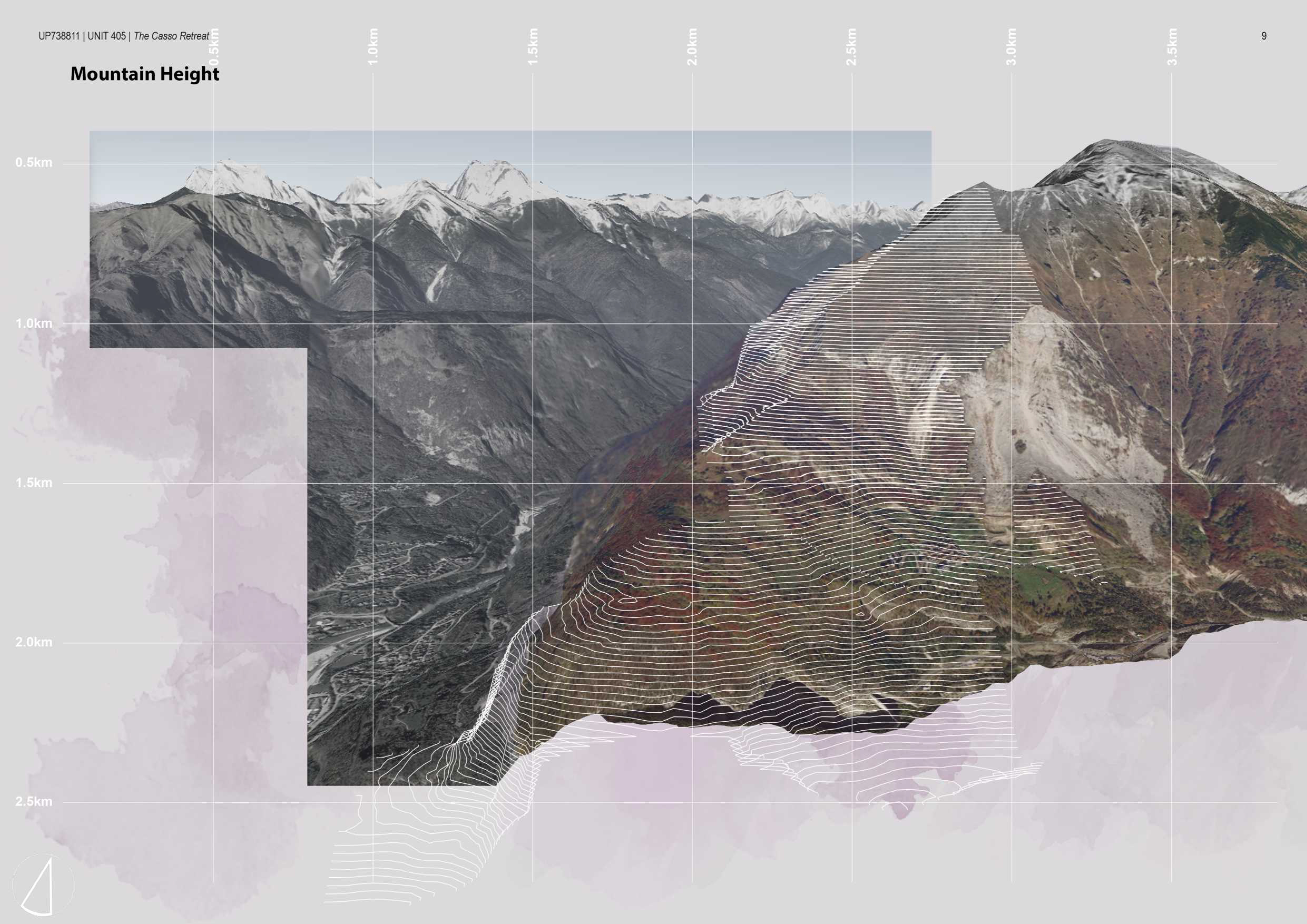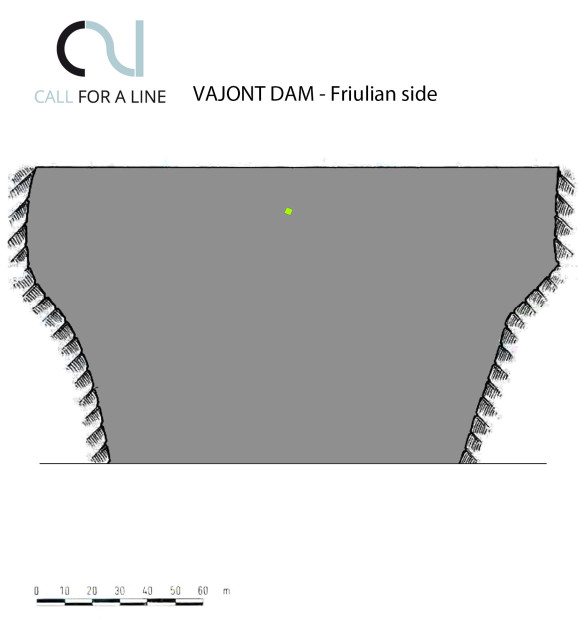
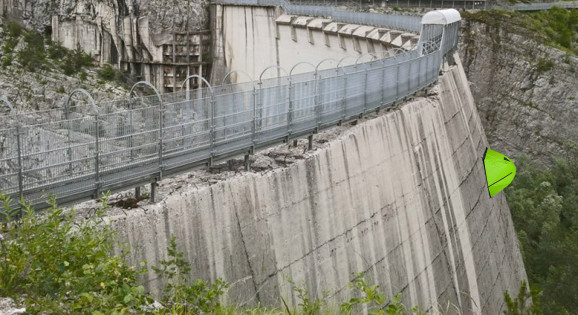
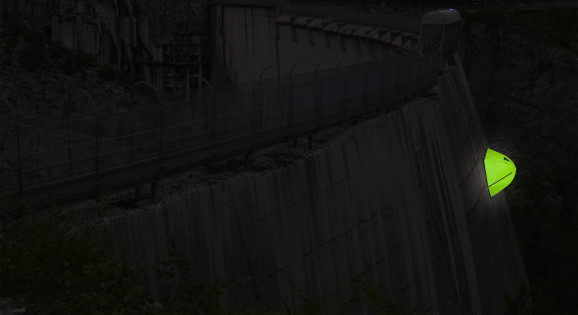
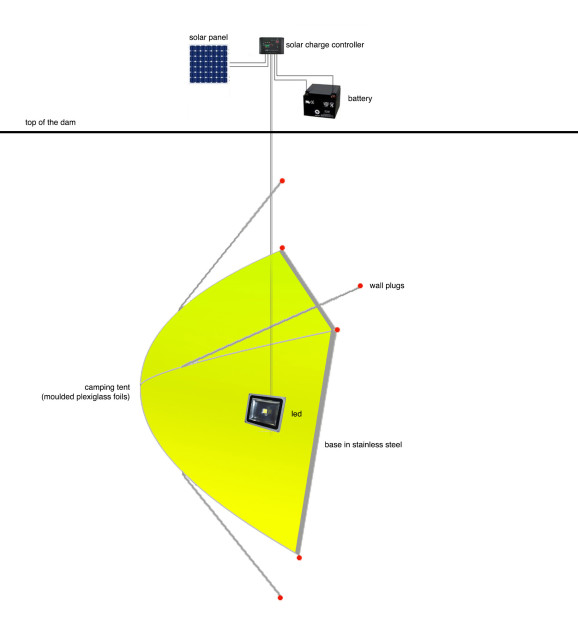
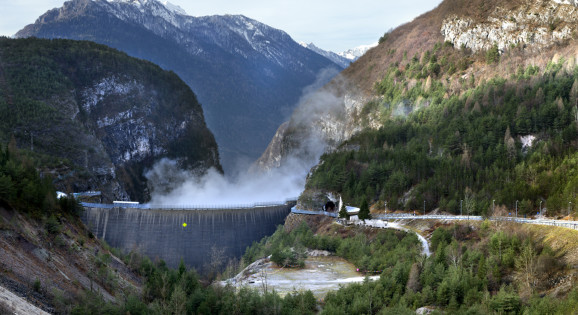
The project is formally a camping tent. A tool used by excursionists in mountain areas similar to that of Vajont.
An artwork that doesn’t has the arrogance of a monument, but that identifies the constant presence of Man in a place that doesn’t belong to him.
The intention is to create a paradoxical – but not invasive – image that becomes a “thing” to look for in the magnitude of the reinforced concrete surface. During the day it will be visible by its bright color, during the night by the light placed inside it.
A weak and portable architecture attacks the massive and inexorable architecture of the infrastructure. A sort of parasite that undermines the architectural solidity of the artifact.
Its protective function seems to change when hung up at the dam. The tent remains a shield to repair from the elements, but it appears fragile and a failure if compared to the mass of concrete.
The structure with a size of 200 x 200 x 100 cm is anchored to the top of the dam and downward by mean of wall plugs (about 10 pieces, of 8 – 10 mm). It has a base in stainless steel that serves to let water or snow flow, to sustain the four moulded plexiglass foils in fluorescent colors and to support the lights. The lights for the nocturnal illumination are led alimented by a battery charged by a solar panel during the day. The battery and the solar panel are placed on the top of the dam for an easier maintenance.
Is it possible to install the artwork through a safety suspended construction platform.
–
Il progetto è formalmente una tenda da campeggio. Uno strumento usato dagli escursionisti in aree montane simili alla zona del Vajont.
Un lavoro che non abbia la presunzione di un monumento, ma che identifichi la presenza costante dell’uomo in un luogo non suo.
L’intenzione è di creare un immagine paradossale, ma non invasiva, che diventi una “cosa” da ricercare nella grandezza della superfice di cemento armato. Di giorno resa visibile dal colore sgargiante, di notte grazie alla luce diffusa dal suo interno.
Una architettura esile e portatile che aggredisce una struttura architettonica massiccia e inesorabile. Una specie di parassita che intacca la solidità architettonica dell’artefatto.
Appesa alla diga, la sua funzione di protezione sembra cambiare. La tenda resta uno scudo con cui ripararsi dagli agenti esterni, ma risulta fallimentare e fragile rispetto alla massa di calcestruzzo.
La struttura di 200x200x100 cm è ancorata al coronamento superiore della diga e più in basso tramite dei tasselli (circa 10 pz da 8 – 10 mm). Ha una base in acciaio inox che serve a far defluire l’acqua o la neve e che sostiene le quattro lamine sagomate in plexiglass di colore fluorescente e l’apparato luminoso. L’apparato di illuminazione notturno a led è alimentato da una batteria che si ricarica durante il giorno tramite un pannello fotovoltaico, posti entrambi nel coronamento della diga (per una manutenzione più agile).
L’opera potrà essere installata grazie ad un cantiere sospeso in sicurezza.

 codroipo
codroipo
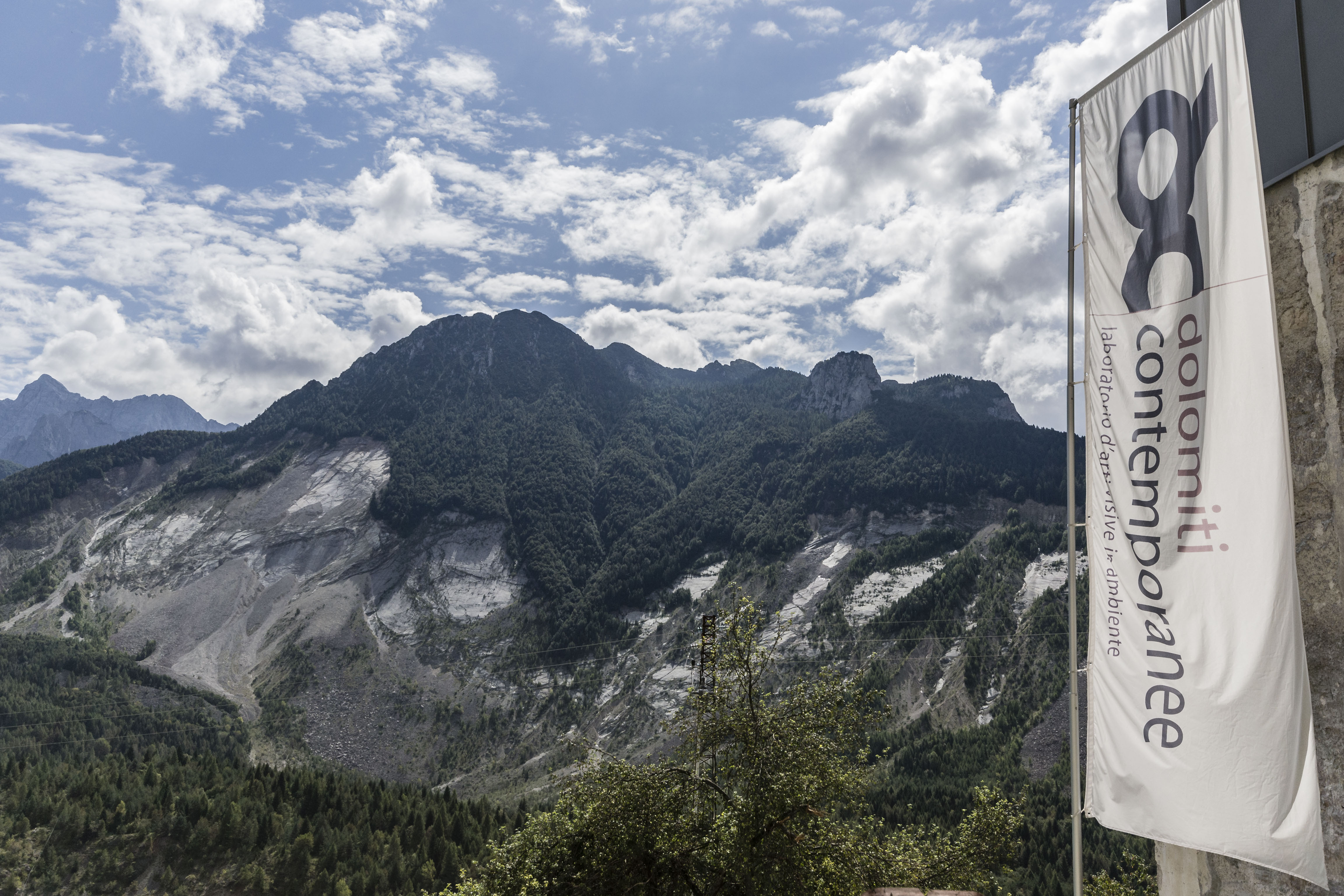
Tuesday, June 15th 2021, 2 – 4 PM, webinar panel:
two calls for vajont: fase _restart.
Vajont: [...]





